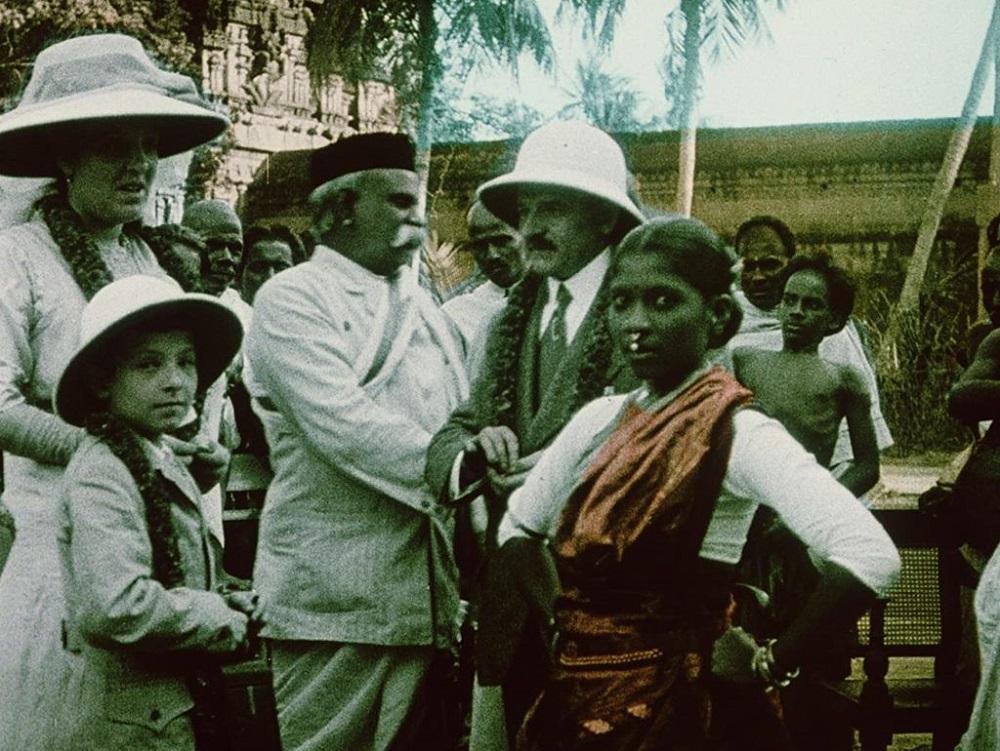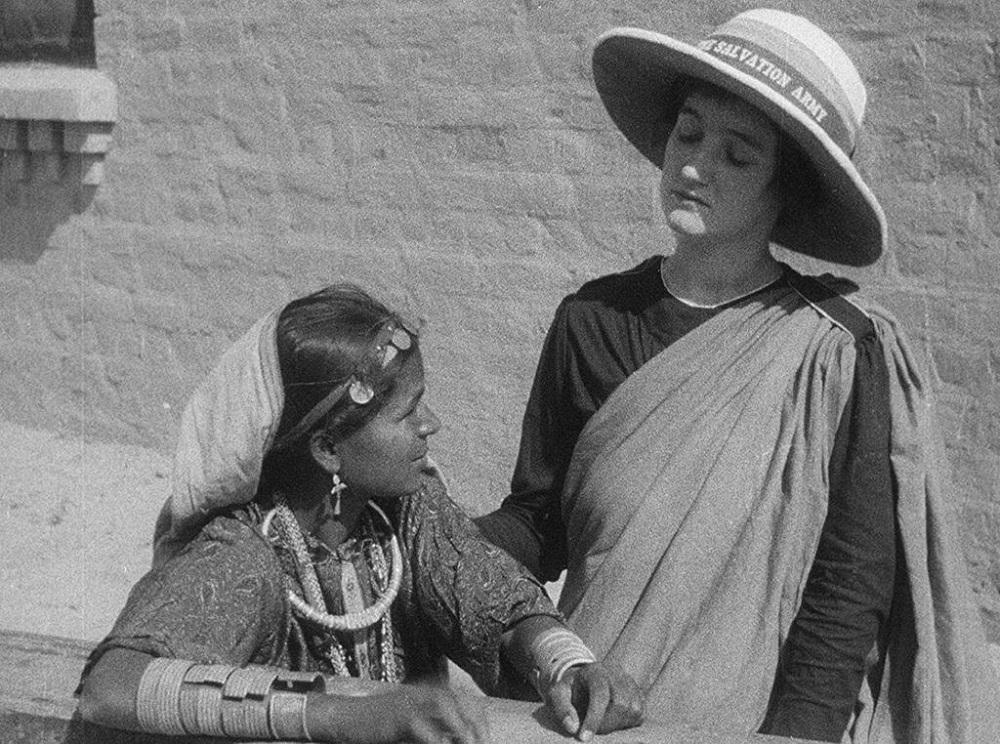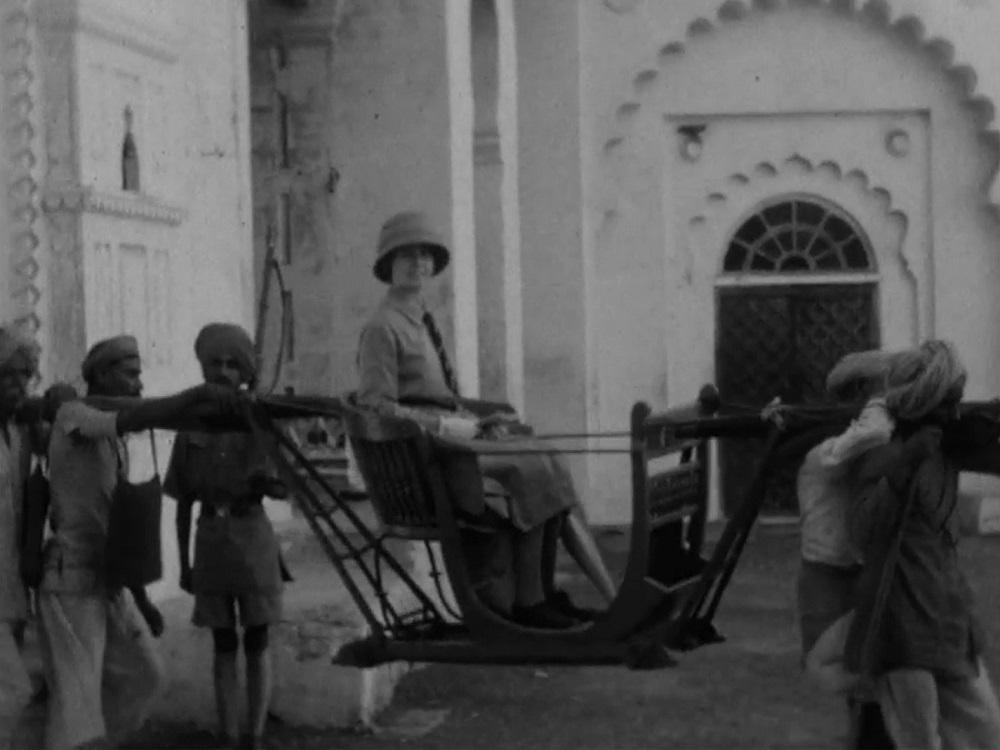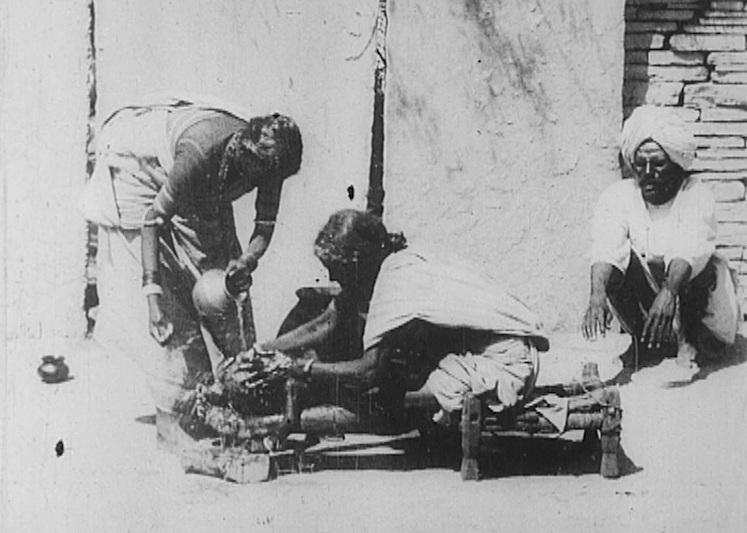Watching British India: On Sandhya Suri’s Around India with a Movie Camera

Sandhya Suri’s second documentary feature Around India with a Movie Camera (2018) presents an album of moving images that provide a taste of the range of non-fiction films made by the British (and some French) filmmakers, starting from the initial years of film until 1947—when India became independent. Drawing from about 50 hours-worth of archival material, in the possession of the British Film Institute’s (BFI) National Archive department, the films include travelogues and hand-coloured, stencilled and brightly-tinted show-reels, newsreels and home movies made by colonial officials, commercial firms, and curious tourists and travellers to the subcontinent. The beginning of the film is framed by earliest-known footage of India from 1899, where we see a long tracking shot of the ghats of Varanasi, misidentified as the ghats of the River Ganges in Calcutta.

The misidentification injects a sense of anxiety into Suri’s narrative, constructed using the archival footage at her disposal. It effectively warns the viewer that the films, despite their heightened performance of transparency, ethnographic or social commentary and everyday realism, they conceal a darker reality of resistance and subjugation that must be accounted for by the 1930s—when Mahatma Gandhi’s popular civil disobedience movements against the colonial government were taking root across the subcontinent and transforming its political and cultural landscape. Therefore, towards the end, we also see footage shot by Gandhi’s grand-nephew Kanu (with a camera that was possibly bought by G.D. Birla) depicting the leader on his peace missions, travelling to riot-stricken parts of Bengal, such as Noakhali (in 1946). Gandhi was not a great enthusiast of the camera and did not care about its great potential for counter-propaganda either. Thus, he set down some terms for Kanu to follow, perhaps keeping in mind the overly performative, ceremonious and odious elephant-stuffed tableaux regularly being churned by the colonial film machinery. His ashram would not fund the films, flash photography would not be allowed and he would never pose for the camera. In Gandhi’s refusal to co-operate with the photographic pose, one finds an ironic attempt to extend the colonial conflict to the stage of filmed representation. There were other Indian celebrities who were more willing to pose and take casual viewers through virtual sightseeing tours across India. One such was Selar Sabu, the breakout Hollywood star who became famous for appearing in Robert Flaherty’s Elephant Boy (1937) and later, The Thief of Bagdad (1940) and Jungle Book (1942).

The film encapsulates some of the stark themes that tend to often be overshadowed by the cheerful façade of co-operative progress for the Empire that is infused within the mood of most of the reels depicting the pomp and grandeur of durbar ceremonies. These ceremonies were either hosted by the Raj, for instance, during the famous Delhi Durbar of 1911, or its various princely allies across India. On account of the catholicity of the British filming enterprise, the films upheld a variety of views that were available for the casual tourist to enjoy in early twentieth-century India. Some were filmed to depict the progress of charitable organisations, like the Salvation Army, wherein we see a clip depicting a white, female Salvation Army volunteer exhorting a tribal girl to denounce her ornaments and choose a simpler life led by the example of Jesus Christ.
The legal and epistemic violence committed upon those castes and tribes denoted as “criminal” due to an act passed in 1871,is visible in the reels made about them—we can see them either struggling for official recognition, or existing in the deepest states of penury at the margins of the colonial state. On the other hand, we see retired colonial officers shoot home movies depicting themselves at play with animals or family members, or we see scenes of conviviality between the British administrators and an increasing number of local, Indian elites who were being blooded into political and bureaucratic roles since the end of the nineteenth-century, in the hopes of creating a “loyal” set of mediators between the British government and the Indian masses.
Aided by a musical composition by Soumik Datta, the album plays out as a silent feature, bringing together all the curated sights of colonial India into our rear-view mirror.

All stills from Around India with a Movie Camera (2018) by Sandhya Suri.
You can read more about the photographic medium in colonial India here, here and here.




